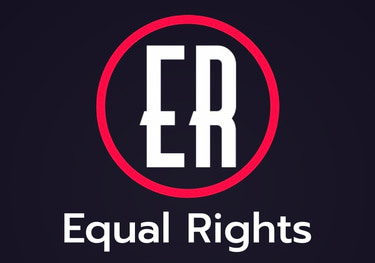The Intersection of Disability Rights & Technology:
Innovations for Inclusion
Kylo B
6/7/2024
The Intersection of Disability Rights & Technology: Innovations for Inclusion
In recent years, advancements in technology have played a transformative role in promoting disability rights and fostering greater inclusion for individuals with disabilities.
From assistive devices to accessible digital platforms, innovative technologies have opened new opportunities and possibilities for empowerment.
This article explores the intersection of disability rights and technology, highlighting key innovations that enhance accessibility and promote inclusivity.
Empowering Individuals with Disabilities
Technology has become a powerful tool for empowering individuals with disabilities by addressing barriers and enhancing independence:
Assistive Devices: Innovations such as screen readers, voice recognition software, and mobility aids (e.g., wheelchairs, prosthetics) enable individuals with disabilities to navigate physical and digital environments more effectively.
Accessible Design: The principles of universal design ensure that products, services, and environments are usable by people of all abilities, promoting inclusivity and accessibility.
Communication Tools: Augmentative and alternative communication (AAC) devices facilitate communication for individuals with speech or language disabilities, enabling greater participation in social and professional settings.
Advancements in Accessibility
Technology has revolutionized accessibility across various sectors, including education, employment, healthcare, and transportation:
E-Learning Platforms: Accessible online learning platforms and educational tools accommodate diverse learning needs and provide equal access to educational resources for students with disabilities.
Remote Work Solutions: Telework and virtual meeting platforms with built-in accessibility features allow individuals with disabilities to participate fully in remote work environments.
Healthcare Innovations: Telemedicine and wearable health devices improve healthcare access and monitoring for individuals with disabilities, enhancing independence and quality of life.
Smart Cities: IoT (Internet of Things) technologies and smart city initiatives incorporate accessibility features, such as adaptive traffic signals and accessible public transportation systems, to enhance mobility and urban accessibility.
Challenges & Opportunities
Despite significant progress, challenges remain in ensuring equitable access to technology for individuals with disabilities:
Digital Divide: Disparities in access to technology and high-speed internet disproportionately impact individuals with disabilities, particularly those from low-income or rural communities.
User Experience (UX) Design: More emphasis is needed on inclusive UX design practices to ensure that digital products and services are intuitive and accessible to users of all abilities.
Data Privacy & Security: Safeguarding the privacy and security of individuals using assistive and IoT devices is essential to build trust and ensure the ethical use of technology.
Future Directions
Looking ahead, the future of disability rights and technology holds promising opportunities for further innovation and inclusion:
Emerging Technologies: AI (Artificial Intelligence), robotics, and wearable tech hold potential for creating personalized solutions and enhancing accessibility in new ways.
Policy & Advocacy: Continued advocacy for disability rights in technology, coupled with policy frameworks that prioritize accessibility and inclusion, will drive positive change.
Collaborative Partnerships: Collaboration between stakeholders, including government agencies, tech companies, disability advocates, and academia, is essential to advance the field of accessible technology and promote universal design principles.
The intersection of disability rights and technology represents a dynamic and evolving field that holds immense potential to promote inclusion and empowerment for individuals with disabilities.
By leveraging innovative technologies, addressing accessibility challenges, and fostering collaborative efforts, we can continue to advance disability rights and create a more inclusive society where every individual can fully participate and contribute.
Together, let us harness the power of technology to build a more accessible and equitable world for all.
